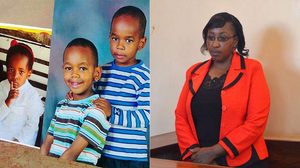
PTSD
What is PTSD? (The Basics)
Table of Contents
Reading Time: 18min
Post-Traumatic Stress Disorder (PTSD) is a mental health condition that can develop in anyone after they have experienced, witnessed, or been confronted with a deeply disturbing or life-threatening event. This is not an exhaustive list, but such events can include serious accidents, combat, sexual or physical assault, natural disasters, or the sudden, unexpected loss of a loved one.
It is crucial to distinguish PTSD from a normal stress response. It is natural and expected to feel upset, fearful, or anxious for a period following a trauma. For most people, these feelings gradually fade. With PTSD, however, the brain’s innate survival mechanism—its "danger alarm" system—malfunctions. Instead of calming down when the threat has passed, this alarm remains active, stuck in the "on" position. This means the individual continues to feel a high level of stress and danger, reacting to everyday situations as if their life is still at risk, long after the traumatic event is over.
This is why a core concept to understand about PTSD is that it is a normal reaction to an abnormal situation. It is not a sign of weakness or a character flaw. It is the mind and body’s prolonged response to an event that was overwhelming, terrifying, or beyond one’s control. The condition reflects a injury to the stress-response system, one that healing and treatment can address.
Causes & Triggers: What Leads to PTSD?
Understanding what leads to Post-Traumatic Stress Disorder (PTSD) involves looking at two key elements: the specific types of events that can act as a catalyst, and the individual risk factors that can influence whether someone develops the condition after such an event.
The Triggering Event: Types of Trauma
PTSD is always preceded by exposure to a traumatic event. However, it is not the objective facts of the event itself, but the individual's subjective experience of it—feeling that their life or bodily integrity is threatened, or witnessing this happen to someone else—that is critical. These events are typically outside the realm of ordinary human experience and include:
Combat Exposure: The intense and prolonged stress of military combat and warfare.
Sexual or Physical Assault: Experiencing a violent personal violation.
Childhood Abuse: Sustained physical, sexual, or emotional abuse during developmentally vulnerable years.
Serious Accidents: Life-threatening events such as car crashes, industrial accidents, or other severe injuries.
Natural Disasters: Surviving events like earthquakes, hurricanes, floods, or fires.
Sudden, Unexpected Loss: The traumatic grief following the shocking death of a loved one.
Witnessing Trauma: Being a bystander to death, severe injury, or violence inflicted upon others.
It is important to note that this list is not exhaustive. Any event that overwhelms a person's ability to cope can be traumatic.
Risk Factors: Influencing Vulnerability
Not everyone who experiences a traumatic event will develop PTSD. The likelihood is influenced by a combination of pre-existing, event-specific, and post-event factors:
Previous Trauma: A history of earlier trauma, especially in childhood, can increase vulnerability, as the nervous system may already be in a sensitized state.
Lack of Support After the Event: The absence of a strong, supportive network of family and friends in the aftermath of trauma is a significant risk factor. Social isolation can hinder natural recovery.
Pre-existing Mental Health Conditions: A history of anxiety, depression, or other mental health challenges can affect resilience and coping resources.
High-Stress Occupations: Individuals in professions that repeatedly expose them to trauma—such as first responders, soldiers, police officers, and emergency room staff—are at an increased risk due to the cumulative effect of these experiences.
In essence, PTSD is not caused by a single factor. It is the result of a complex interaction between a devastating event and an individual's biological, psychological, and social environment. Understanding these factors helps to depersonalize the condition, framing it not as a personal failure, but as a understandable response to overwhelming circumstances.
The symptoms of Post-Traumatic Stress Disorder (PTSD) are the mind and body's manifestations of a nervous system that remains on high alert after a trauma. To better understand them, clinicians often group these symptoms into four distinct clusters. It's important to remember that everyone's experience is unique, and they may not have every symptom.
1. Re-Experiencing: Reliving the Trauma
This cluster involves involuntary and intrusive memories of the traumatic event. It is as if the past event is happening again in the present moment. This can include:
Flashbacks: Vivid, dissociative episodes where the person feels or acts as if the trauma is recurring.
Nightmares: Distressing, often recurring dreams related to the event.
Intrusive Thoughts: Unwanted and upsetting memories that pop into the mind without warning.
Intense Emotional or Physical Distress: Feeling overwhelming fear, horror, anger, or sadness, or having a physical reaction (like a racing heart) when exposed to reminders of the trauma.
2. Avoidance: Steering Clear of Reminders
To prevent the painful re-experiencing symptoms, individuals with PTSD often go to great lengths to avoid anything associated with the trauma. This includes:
Avoiding People, Places, or Activities: Steering clear of conversations, situations, or locations that might trigger a memory. This can severely restrict a person's life.
Avoiding Thoughts or Feelings: Actively trying to suppress thoughts, memories, or emotions related to the event. This emotional numbing is a form of avoidance.
3. Negative Changes in Mood and Cognition: The Shadow on the Mind
The trauma can cast a long shadow, altering how a person thinks and feels about themselves and the world. This cluster includes:
Inability to Recall Details: Trouble remembering important parts of the traumatic event (dissociative amnesia).
Negative Beliefs: Persistent and distorted beliefs about oneself ("I am bad"), others ("No one can be trusted"), or the world ("The world is completely dangerous").
Distorted Blame: Blaming oneself or others for the trauma or its consequences in an unrealistic way.
Loss of Interest: Withdrawing from previously enjoyed activities or relationships.
Detachment: Feeling emotionally numb, disconnected from other people, or unable to experience positive emotions like love or happiness.
4. Hyperarousal and Reactivity: Being on Constant Alert
This cluster reflects the body's persistent state of "high alert." The person's fight-or-flight response is chronically activated, leading to:
Hypervigilance: Constantly scanning the environment for danger, feeling "on guard" even in safe situations.
Being Easily Startled: Jumping or feeling panicked in response to unexpected noises or movements.
Irritability or Aggression: Having outbursts of anger or behaving in an aggressive way, often over small things.
Self-Destructive Behavior: Engaging in reckless or risky activities (like substance abuse or dangerous driving).
Sleep and Concentration Problems: Difficulty falling or staying asleep, and trouble focusing on tasks.
Recognizing these symptoms as interconnected clusters—rather than isolated issues—is key to understanding the profound impact of PTSD on a person's entire being.
Post-Traumatic Stress Disorder (PTSD) is a remarkably common human experience, affecting millions of people across the globe. In the United States alone, it is estimated that about 6% of the population will experience PTSD at some point in their lives. This translates to millions of individuals, each with their own unique story, demonstrating that this condition is a significant public health concern and far from rare.
A common and persistent myth is that PTSD is a condition that only affects military veterans. While the experience of combat is a profound and frequent cause—and supporting veterans is critically important—this narrow view is inaccurate and can prevent others from recognizing their own symptoms and seeking help.
The reality is that PTSD can affect anyone, of any age, gender, or background, who has experienced or witnessed a traumatic event. This includes, but is not limited to:
Survivors of sexual and physical assault
People who have experienced childhood abuse or neglect
Survivors of serious accidents, such as car crashes or industrial disasters
Those who have lived through natural disasters, like earthquakes, fires, or floods
Civilians living in war zones or areas of violent conflict
First responders (paramedics, police, firefighters) repeatedly exposed to traumatic events
Those who have received a life-threatening medical diagnosis or undergone traumatic medical procedures
People who have experienced the sudden, unexpected loss of a loved one
Understanding the wide reach of PTSD is a crucial step in reducing the stigma that surrounds it. It is not a sign of weakness or a condition limited to a specific group. It is a universal human response to overwhelming trauma, and recognizing its prevalence helps create a more compassionate and informed society where more people feel empowered to seek the support they need.
Receiving a diagnosis of Post-Traumatic Stress Disorder (PTSD) is a careful and structured process designed to fully understand an individual's experience. It is not a label that is applied quickly; rather, it is a clinical identification meant to guide effective treatment.
The process begins with a comprehensive evaluation by a qualified mental health professional, such as a psychiatrist or psychologist. This evaluation involves a detailed conversation where the clinician will ask about the traumatic event, the specific symptoms the person is experiencing, and how those symptoms are impacting their daily life, work, and relationships. The goal is to listen with empathy and build a complete picture of the individual's struggles.
To ensure accuracy and consistency, clinicians use specific criteria outlined in the Diagnostic and Statistical Manual of Mental Disorders, Fifth Edition (DSM-5). This manual provides a common language and standard framework for diagnosis. Key requirements for a PTSD diagnosis include:
Exposure to Trauma: The person must have been exposed to a traumatic event in a specific way (directly, witnessing, learning it happened to a close relative, etc.).
Symptom Presence: The individual must experience a required number of symptoms from each of the four clusters: Re-experiencing, Avoidance, Negative Mood/Cognition, and Hyperarousal.
Duration: These symptoms must persist for more than one month.
Significant Distress or Impairment: The symptoms must cause clinically significant distress or impairment in the person's social, occupational, or other important areas of functioning.
Exclusion of Other Causes: The disturbance must not be due to the physiological effects of a substance (e.g., medication, alcohol) or another medical condition.
This structured approach ensures that the diagnosis is thorough and accurate, distinguishing PTSD from normal grief or stress responses and from other mental health conditions. It is the essential first step toward developing a personalized and effective treatment plan for healing.
Healing from Post-Traumatic Stress Disorder (PTSD) is not about erasing the past, but about changing its hold on the present. Recovery is a journey of learning to manage symptoms, process the trauma, and reclaim a sense of safety and control. Effective treatment typically involves a combination of therapies, often tailored to the individual's specific needs.
Psychotherapy (The Gold Standard)
Psychotherapy, or talk therapy, is the foundation of PTSD treatment. Several specialized, evidence-based approaches have been proven highly effective:
Trauma-Focused Cognitive Behavioral Therapy (TF-CBT): This therapy helps individuals understand how their thoughts and feelings about the trauma are affecting their behavior. It provides tools to process the painful memories, challenge and reframe unhelpful beliefs (e.g., "It was my fault"), and develop healthier coping patterns.
EMDR (Eye Movement Desensitization and Reprocessing): EMDR is a unique therapy that helps the brain "reprocess" stuck traumatic memories. While the person briefly focuses on the trauma, the therapist guides them in bilateral stimulation (often side-to-side eye movements). This process is thought to help the brain properly store the memory, so it is no longer as emotionally disruptive or vivid.
Prolonged Exposure Therapy (PE): Avoidance is a core symptom of PTSD. PE gently and safely helps individuals confront what they have been avoiding. This involves talking about the trauma in detail with a therapist ("imaginal exposure") and gradually facing safe situations, places, or activities that have been avoided ("in vivo exposure"). Through this process, the memories and situations lose their power to trigger intense fear.
Medication
While medication does not cure PTSD, it can be a powerful tool to manage overwhelming symptoms, making it easier to engage in therapy.
SSRIs/SNRIs: These antidepressants (Selective Serotonin Reuptake Inhibitors and Serotonin-Norepinephrine Reuptake Inhibitors) are commonly prescribed. They can help reduce symptoms of anxiety, depression, and hypervigilance, and are often used in conjunction with psychotherapy.
Lifestyle & Support Strategies
Healing extends beyond the therapist's office. Building a foundation of wellness is crucial for long-term recovery:
Support Groups: Connecting with other trauma survivors provides validation, reduces feelings of isolation, and fosters hope through shared experiences.
Mindfulness and Grounding Techniques: Practices like meditation and deep breathing can help calm the nervous system, manage flashbacks, and anchor a person in the present moment.
Regular Exercise: Physical activity is a powerful way to naturally reduce stress hormones and release endorphins, improving mood and sleep.
Healthy Routines: Establishing consistent patterns for sleep, nutrition, and daily structure can help restore a sense of predictability and safety to a world that feels chaotic.
The path to recovery is deeply personal, and what works for one person may differ for another. The unifying factor is hope: with the right combination of professional support and self-care, individuals can and do heal from PTSD.
Supporting a loved one with Post-Traumatic Stress Disorder (PTSD) requires patience, empathy, and understanding. Your support can be a cornerstone of their recovery, creating a safe environment where healing can begin. Here’s how you can help effectively.
What TO Do: Supportive Actions
Be Patient and Listen Without Judgment: Healing from trauma is not linear. There will be good days and difficult days. Offer your presence and a listening ear without pushing for details. Simply saying, "I'm here if you want to talk, and it's okay if you don't," can be incredibly powerful. Your calm, steady presence is a safety signal.
Educate Yourself: Take the time to learn about PTSD. Understanding the symptoms—like why they might be easily startled or seem emotionally numb—helps you respond with compassion instead of confusion or frustration. It allows you to see the person, not just the condition.
Offer Practical Help: The symptoms of PTSD can make daily tasks overwhelming. Instead of a general "Let me know if you need anything," offer specific, practical help. This could be making a meal, running an errand, helping with chores, or simply sitting with them quietly. Concrete actions alleviate daily stress.
Respect Their Boundaries and Triggers: Your loved one may need to avoid certain situations, sounds, or topics. Respect these needs without question or criticism. Ask how you can help them feel safe and follow their lead. Trust is built when they feel in control.
What to AVOID: Common Pitfalls
Don't Pressure Them to Talk: Avoid pushing them to share details of the trauma before they are ready. Forcing the conversation can be re-traumatizing. Let them open up at their own pace.
Don't Dismiss Their Experience: Never minimize what they are going through. Avoid phrases like, "It could have been worse," "You should be over it by now," or the most harmful, "Just get over it." These statements are deeply invalidating.
Don't Take Symptoms Personally: Their irritability, emotional numbness, or social withdrawal are symptoms of the disorder, not a rejection of you. Try not to be offended if they need space; it is a coping mechanism, not a personal slight.
The Most Important Step: Encourage Treatment Gently
You can be a catalyst for healing by gently encouraging them to seek professional help. Frame it as a sign of strength, not weakness.
How to Approach It: You might say, "What you're going through is really tough, and you don't have to handle it alone. There are effective treatments that can help. Would you be open to looking into it with me? I can help you find someone or even go with you to an appointment if you want."
Your Role: Your role is not to be their therapist, but to be a supportive partner who helps them take that first, courageous step toward getting the expert care they deserve.
Misconceptions about Post-Traumatic Stress Disorder (PTSD) create stigma and can prevent people from seeking the help they need and deserve. Replacing myths with facts is a powerful step toward building a more understanding and supportive environment.
Myth: "Only soldiers and combat veterans get PTSD."
Fact: While soldiers are significantly affected, PTSD can develop in anyone who has experienced a traumatic event. This includes survivors of sexual assault, childhood abuse, serious accidents, natural disasters, and sudden loss. First responders, refugees, and civilians exposed to violence are also at high risk. Trauma does not discriminate by profession, age, or background.
Myth: "People with PTSD are unstable and dangerous."
Fact: The vast majority of people with PTSD are not violent. In fact, they are far more likely to be a danger to themselves than to others. The core symptoms are often hypervigilance (being "on guard"), avoidance, and emotional withdrawal—not aggression. This harmful stereotype is not only false but also deeply isolating for those living with the condition.
Myth: "Developing PTSD is a sign of weakness."
Fact: PTSD is not a character flaw or a lack of resilience; it is a neurobiological injury. An overwhelming traumatic event can change how the brain and body respond to stress, affecting areas responsible for fear, memory, and emotion. Developing PTSD is a physiological response to an event that overwhelmed the body's natural coping mechanisms, much like a physical wound from a physical blow.
Additional Myths Debunked:
Myth: "If you have PTSD, you're 'broken' for life."
Fact: This is perhaps the most damaging myth. With effective, evidence-based treatment, people can and do recover from PTSD. Healing is a journey that can lead to post-traumatic growth, where individuals develop new strength, perspective, and a deeper appreciation for life.Myth: "People should just be able to forget about the trauma and move on."
Fact: Trauma memories are often stored differently in the brain than regular memories. They are not simply "forgotten." Treatment focuses on properly processing these memories so they lose their painful intensity and become integrated into one's life story without controlling it.
A Message of Hope and Recovery
If you or someone you love is living with PTSD, it is crucial to hold onto this fundamental truth: healing is not only possible, it is the expected outcome with the right support. Recovery from PTSD is best understood as a journey, not a destination. It is a process of learning to manage symptoms, process the memory of the trauma, and gradually reclaim a sense of safety, control, and connection in your life. With evidence-based treatments and strong support, the intense grip of PTSD can loosen, allowing individuals to build rich, fulfilling lives defined not by their trauma, but by their strength and resilience.
An important and hopeful concept that emerges from this difficult journey is post-traumatic growth. This is the profound positive change that some people experience as a result of their struggle with trauma. It does not mean the trauma was good, nor does it negate the pain. Rather, it signifies that people can emerge from their suffering with a renewed sense of purpose, a deeper appreciation for life, more meaningful relationships, and a recognition of inner strength they never knew they had. Healing from PTSD is not about returning to who you were before, but about integrating the experience to become a different, often wiser and more compassionate, version of yourself.
There is a path forward. The nightmares can become less vivid, the world can feel safer, and joy can become accessible again. The courage to seek help is the first step on that path.









